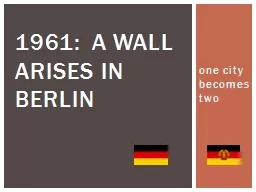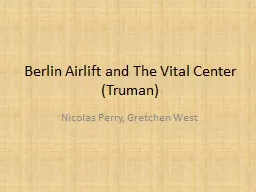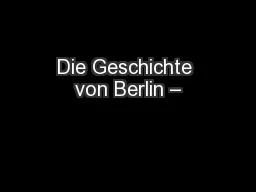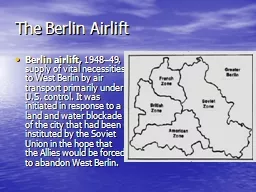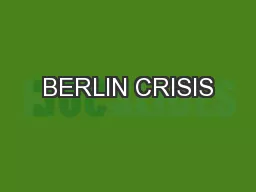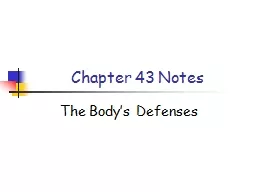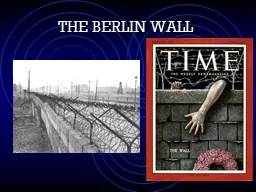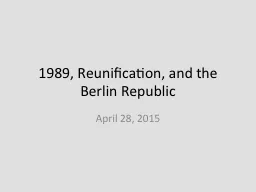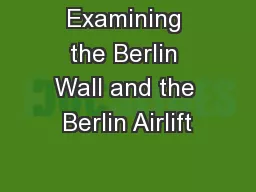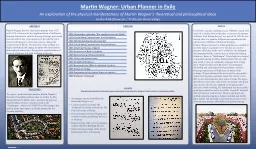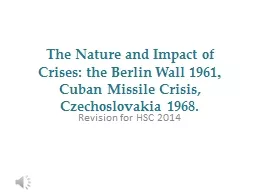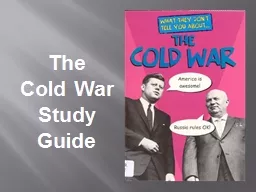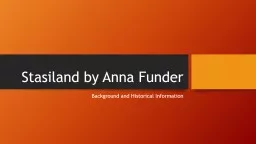PPT-one city becomes two 1961: A wall arises in berlin
Author : kampsta | Published Date : 2020-06-25
World War II victors the United States Great Britain France and the Soviet Union divided Germany into four zones each controlled by one of the four countries
Presentation Embed Code
Download Presentation
Download Presentation The PPT/PDF document "one city becomes two 1961: A wall ari..." is the property of its rightful owner. Permission is granted to download and print the materials on this website for personal, non-commercial use only, and to display it on your personal computer provided you do not modify the materials and that you retain all copyright notices contained in the materials. By downloading content from our website, you accept the terms of this agreement.
one city becomes two 1961: A wall arises in berlin: Transcript
Download Rules Of Document
"one city becomes two 1961: A wall arises in berlin"The content belongs to its owner. You may download and print it for personal use, without modification, and keep all copyright notices. By downloading, you agree to these terms.
Related Documents

